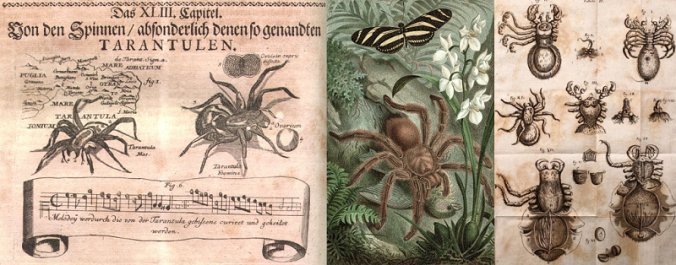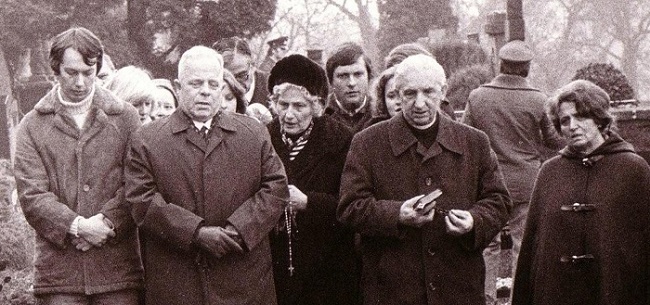Before I commenced this blog, I was aware that there were several discrepancies between my source material and the more commonly-accepted chronology of Pope Paul VI’s survival. I have been graciously contacted by several readers in the Francophone world who have pointed these out—and the contradictions are more dire than I first realized. This poses a problem. There appear to be two serious differences between the versions, and they are differences which do not reconcile.
The first difference is that the mainstream narrative claims Pope Paul and his double were switched out interchangeably all the way up until 1975, when the double took over entirely. Meanwhile it says that Pope Paul stayed at the Vatican and did not go into exile until 1981. My material (mostly the testimony of Claudio Gagne-Bevilacqua) claims Pope Paul left the Vatican in 1972 shortly after declaring “the smoke of Satan has entered the Catholic Church,” and never returned. My material says he was being sheltered in a Cretan monastery as early as the mid-1970s, having spent a brief period in the city of Alexandria in Egypt.
The second area of contradiction is where the mainstream narrative claims Pope Paul was drugged in order to be made compliant in carrying out the modernist program of Vatican II. My material, however, says that rather than being drugged, Pope Paul was weighed down by a terrible demonic oppression, the result of a hex (or curse) which had been placed on him by occultists in 1935. It was this demonic oppression which gradually harassed and coerced the young Giovanni Battista Montini into modernism: first as an influential member of the Roman Curia, and later during his tenure as Archbishop of Milan. There would’ve been no need to drug him, as he was burdened by demons, and only very infrequently was he able (by the grace of God) to wrest himself from their awful sway.
There are also a few minor discrepancies, such as whether or not John Paul II knew of the double, and other quibbles. But these points are less troublesome. (In the case of JP2 being ignorant of the double, my material attests to it only via hearsay, so it doesn’t quite make or break the veracity of the testimony). Nevertheless, the brute fact of the two major contradictions remains. What to do with this? Was Claudio Gagne-Bevilacqua just a crazy old man, rambling on at length over four days of interviews in a senile delirium? Or is his testimony at least partly reliable: dredging up portions of the truth insofar he could recall it, with the rest being culled from some nebulous half-dream or the vicissitudes of his mind’s whimsy? Or are the accounts of Pope Paul’s survival like the remembrances in the movie Rashomon, where the same event is witnessed by four people who give differing versions?
Another possibility was suggested by one of my correspondents. He remarked, “I do not know if I should believe this whole story, but if it is untrue, it is a very interesting novel.” This comment piqued my curiosity. I began to wonder if, somehow, the notes and transcripts and clippings I found in my father’s study were supposed have been the basis for some kind of creative writing project. I gave it some consideration—but in the end, it doesn’t seem likely. Firstly, I found them in a filing cabinet dedicated strictly to his journalistic endeavors. Secondly (as I have said of him before), my father was a rabid cinephile. He did, in fact, have some small portions of creative writing stored away in one of his desk drawers, but they were all the beginnings of screenplays—not novels or ficciones. My father, it seems, occasionally decided he would like to write for the movies. But shortly after starting these screenplays, he would give up on them. None of them go past twenty pages. And the subject matter is relatively light. They’re rather boilerplate, with nothing of the originality or innovation of the French New Wave which he so admired. The most “serious” of the lot is an espionage thriller about a woman in her forties in Soviet Russia named Lyudmila Trebetskaya who is a sympathizer for the West. The description of Lyudmila reads: “a savvy and attractive Moscow socialite greatly resembling Jacqueline Bisset.” It’s pure fluff, I’m afraid: John le Carré-derivative fluff. Father was an excellent and intelligent man, but sadly, creative writing was not among his talents (with all due apologies to my sire. It may also seem that I speak of him as if he’s deceased. He is not, but unfortunately he has Alzheimer’s disease and is “no longer there,” so to speak. I have no recourse to him in verifying the contents of the folders).
So no: Father does not seem to have focused his meager creative energies on anything nearly as extensive, intricate, or involved as the two massive manila folders documenting the long saga of Pope Paul VI. And besides, the material dovetails rather perfectly with too many actual events and persons of the twentieth century in the Catholic Church. The material does not present itself along the lines of, say, the sensationalized novels of Fr. Malachi Martin (which he termed “factions”—his portmanteau for blending fact and fiction), nor does it appear to be anything like an “alternative history,” such as the popular series The Man in the High Castle, or things of that nature. On the contrary: it all seems to have taken place in the very same past as our own, a past which has duly followed time’s arrow straight up to the present day. With that in mind, I do not believe the material to be a fiction.
I myself might be to blame for the “storytelling” quality. The transcripts themselves are long and rambling, and much of the time they can be downright banal. Thus far I have been attempting to trim off the tedium and give concise summaries of the history; only in the last post did I try to let the interview transcript speak more for itself. (Perhaps I will attempt to do more of that in the future, where portions of the interview are high in content. The first paragraph of the last post, however, where I summarized the childhood details of Claudio Gagne-Bevilacqua, was necessary, as I saw fit to condense into several sentences what it took him a couple pages of inconsequential chatter to relate).
Having taken into account the conflicts that exist between the narratives, I concede that my material is lesser. One of my correspondents informs me: “Fr. Basile Harambillet, a lawyer of the Roman Rota, maintained until his death in the early ’80s that he had been able to confirm that the true Paul VI was a prisoner in the Vatican throughout the double’s period of activity.” Admittedly, my material does not come from an esteemed canon lawyer. It comes from a self-described “simple man” who was essentially only the butler. However, I have decided that I will publish my material in full because I believe it is quite compelling in certain parts. Perhaps others will find it compelling as well. I think the testimony of Claudio Gagne-Bevilacqua contains much to recommend it. In fact, on the two main issues where we find discrepancies, I find it to be more satisfying. In charity, I would pose the following two questions:
1. Why was Pope Paul VI drugged, and why was he alternated with his double? Wouldn’t the modernist conclave in 1963 simply have elected a known modernist? It seems it would’ve been easier for them to elevate one of their own, rather than drug and incapacitate someone disloyal to the cause. Besides, Cardinal Montini had evinced modernist tendencies long before his coronation as pope. Was he also being drugged then?
2 . Why was Pope Paul VI kept prisoner in the Vatican until 1981? If he was miraculously protected from Freemasonic assassins for so long, why did he have to go into exile? The protection could’ve just been extended until the present day.
To my lights, my father’s material answers both of these questions rather pragmatically. First, it maintains that Pope Paul VI was not drugged into submission by the Vatican cabal, but that he was accepted by them as a longtime modernist, having shown progressive tendencies for more than twenty years. This was effected by a demonic oppression which lessened his free will and coaxed him into error and heresy.
Secondly, it says he went into exile almost as soon as his Vatican manipulus realized he could no longer be trusted to tow the progressive line. In 1968 he issued Humanae Vitae, which went against the modernist grain. From that point on, they lost their confidence in him, and lit upon the decision to replace him with a double, since there was already someone from his past who was known to bear a striking resemblance to him. When Pope Paul finally freed himself from his demonic oppression and brazenly told the truth (about “the smoke of Satan”), they promptly arranged to have him killed. He found out about the plot and went on the lam, which is when they propped up the double in his place. In fact, it was the double who exhibited “drugged up” behavior, for the simple reason that he had been a drug addict in the mid-1960s.
Pope Paul’s survival has indeed been miraculous, but rather than being miraculously protected, my material presents it as a “synergistic” cooperation between the divine will of God and Pope Paul’s own free will, which he recovered after he freed himself from his demonic oppression. Once he was out from under their influence, he showed himself to be, at heart, a good and holy man: faithful to tradition and hostile to modernism. And when he returns to Rome and takes up the fisherman’s chair, the Church will at long last have a good and holy pope.
All that said, I concede that most believers in the survival of Paul VI will probably be disinclined to accept my material in toto due to the differences. So be it. But hopefully it will unveil, at least, some portions of the truth which have heretofore lain dormant. Perhaps it can serve, not as an alternative, but as a modest supplement, however flawed. The existing narrative is persuasive on many counts—particularly where it coincides with the prophecies of Fatima (my own material hints not only at Fatima, but also a perennial Catholic prophecy known as the Three Days of Darkness, which I will get to later). I myself am grateful for being pointed to the truly exhaustive compendium of research, writing, and translations undertaken by a brilliant documentarian Français named Jean-Baptiste André. His work forms the most comprehensive resource on the internet on this subject. With his permission, here are several links to his websites.
Pope Paul VI’s Survival and the Secret of Fatima (English)
La Survie du Pape Paul VI (French)
Paul VI and the Mystery of Iniquity (French movie w/ English subtitles)
My original inclination still remains: to publish an entire summary of my father’s material. I will put it all out for the consumption of anyone who might still be interested, and decidat lector—my Latin is probably garbled there, but: “let the reader decide.” Let everyone separate the wheat from the chaff in this blog according to however they see fit. In the words of a “tedious old fool”: “If circumstances lead me, I will find / Where truth is hid, though it were hid indeed / Within the centre.” (Wm. Shakespeare, Hamlet, Act 2, Scene 2).

